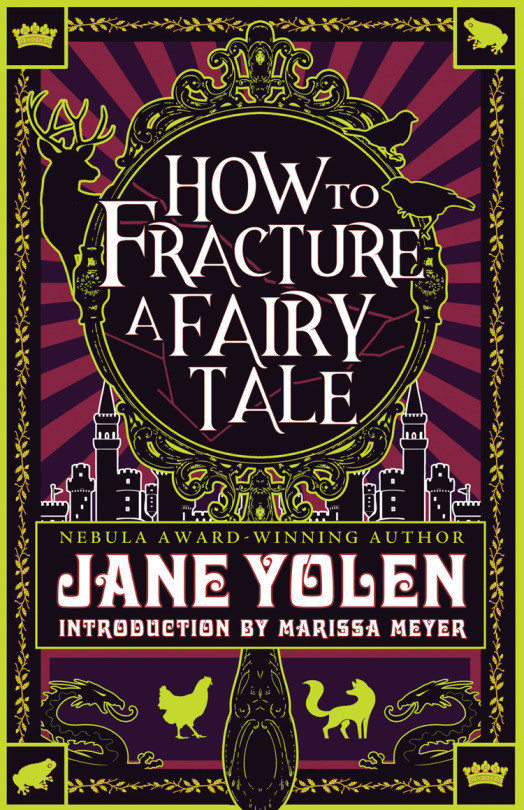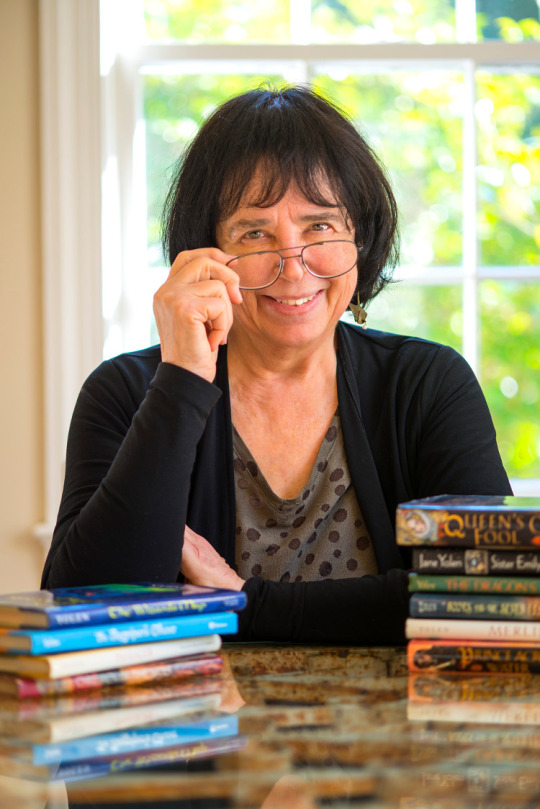Jane Yolen’s highly recommended HOW TO FRACTURE A FAIRY TALE delights and fascinates

At REVIEWS & ROBOTS, Jacob Olson praises Jane Yolen’s HOW TO FRACTURE A FAIRY TALE.
I’m a lover of fairy tales. I’ve long collected various editions of the Grimm and Andersen stories, reveling in their intricate illustrations and terrifying tales meant to scare children into behaving. Our culture has changed these stories since their inception, their modern retellings meant to enchant in lieu of fear.
HOW TO FRACTURE A FAIRY TALE is that rare addition to the genre – a modern take on the tales that doesn’t seem forced, that sticks with the enchanting cadence of fairy tale storytelling while still feeling fresh. I was delighted by the changes made to tales I know well, and fascinated at the stories I had never read.
PURPLE PEOPLE READERS enjoys the collection.
What I most appreciated is how Yolen reworked some of these stories to relate to today’s world, and others are just timeless. I found each story to be moving and speak to something universal about our world, which is what fairy tales, at the end of the day, are supposed to be for. As usual with short story collections, some stories spoke to me more than others, but there wasn’t any story that I felt was a letdown; I enjoyed them all.
I highly recommend HOW TO FRACTURE A FAIRY TALE to any fan of fairy tales, but I especially see a lot of value in using this as a teaching tool for writing and studying fairy tales.

Photo: Jason Stemple
Paul Semel on his eponymous site interviews Yolen about her latest book.
HOW TO FRACTURE A FAIRY TALE is a short story collection. But is there a common theme to these stories, or some kind of connective narrative like what Ray Bradbury did in The Illustrated Man?
These are all fractured versions of previously published fairy tales. Some of them based on tales that are well known — “Three Billy Goats Gruff,” “Red Riding Hood,” “Cinderella,” “Rumpelstiltskin,” etc. — and some of them on much lesser-known stories. I know a lot of folklore, and have done some dozen books based on folklore, including Favorite Folktales From Around The World, Gray Heroes: Elder Tales From Around The World, and Not One Damsel In Distress. But all the tales in HOW TO FRACTURE A FAIRY TALE are reworked, torn apart, put together, some standing on their heads or tails or twisted in other ways. Plus in the back — as in the first volume of stories I did for Tachyon, THE EMERALD CIRCUS — there is full back-matter. In this instance, which stories I am fracturing, where the ideas came from, little points of special interest, and always a poem of mine; some published before, some brand new for the volume.
The stories in HOW TO FRACTURE A FAIRY TALE are fantasy tales. But do any of these stories, or this collection as a whole, also fall into different subgenres of fantasy, or combinations of them?
There’s folklore, occasional frisson of horror, some flat-out humor, legends, and one or two almost edging into science fiction. All twisted.
Are there any writers, or specific stories, that had a big influence on any of the stories in HOW TO FRACTURE A FAIRY TALEe but not on anything else you’ve written?
Interesting question. Probably Terri Windling, Ellen Datlow, Angela Carter, and Isak Dinesen because they have all taken and fractured old tales. And their stories sing. But they have also all had a big influence on my actual writing career, or my choices of adaptations, or pointed me towards stories or ideas that I hadn’t considered before.
For more info on HOW TO FRACTURE A FAIRY TALE, visit the Tachyon page.
Cover design by Elizabeth Story
